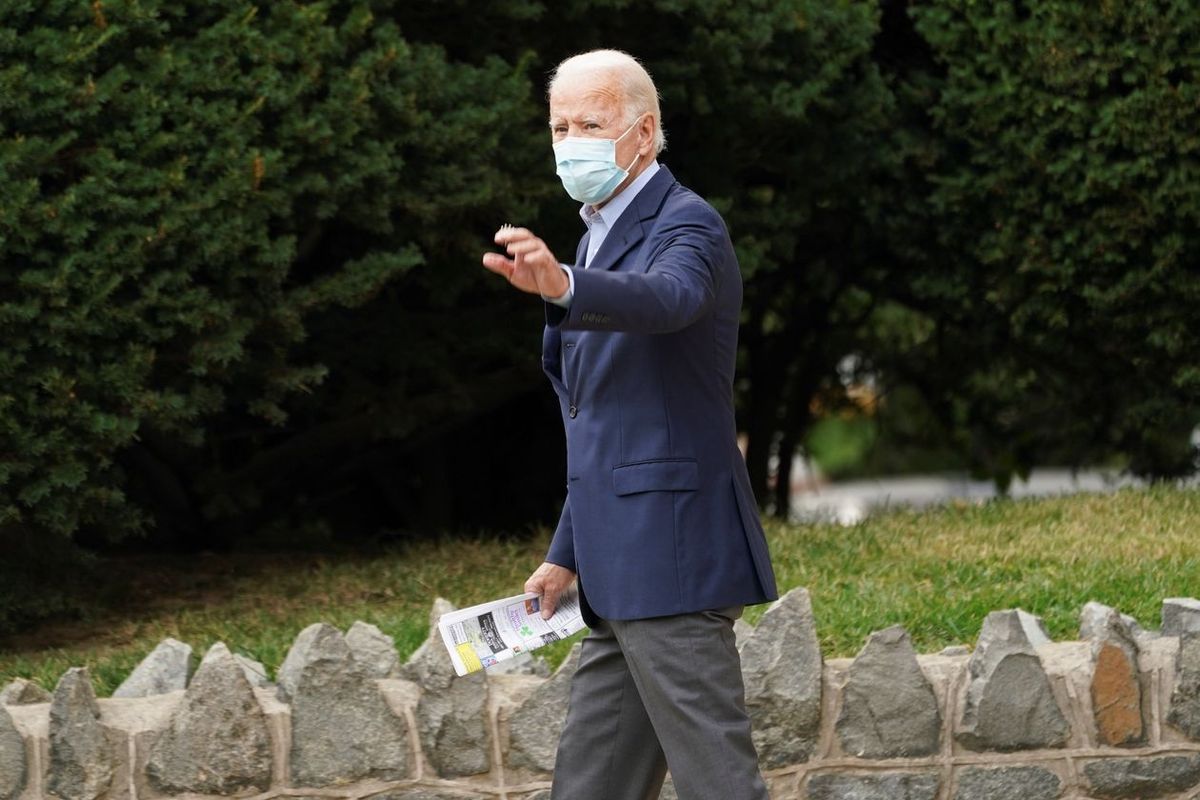Joe Biden’s green policy explained

A few minutes every morning is all you need.
Stay up to date on the world's Headlines and Human Stories. It's fun, it's factual, it's fluff-free.
Against President Trump’s denial of the threat that climate change poses, Biden’s plan appears transformational.
2020 has had no shortage of twists and turns. Impeachment, the coronavirus pandemic, a presidential election like no other and a whole host of news stories large and small have combined to subject the world to unprecedented news saturation.
In the midst of all this, the longer-term issues that face not just the United States, but the entire world, can all too easily vanish from view.
2020 has borne witness to the growing impact human-induced climate change has inflicted upon our planet. The US, in particular, has seen fires raging up and down the West Coast while other parts of the country have found themselves subjected to a record hurricane season.
It is understandable that climate change may not be the first thing on voters’ minds when going to the polls in November given the impact of the coronavirus pandemic on the everyday life of most Americans. However, the problem of climate change and its impact upon how we live our everyday lives will continue to be a problem in a post-coronavirus world.
While some say the climate plan put forward by Democratic presidential candidate Joe Biden is the most progressive ever, others remain concerned that it doesn’t go far enough.
The Biden Climate Plan
Biden’s climate plan is a combination of measures, including significant government investment, recommitting to international agreements and a general reversal of the course taken during the Trump presidency.
Biden himself has stated that addressing the climate challenge “would be a once-in-a-lifetime opportunity to jolt new life into our economy, strengthen our global leadership, protect our planet for future generations.”
The former vice president has said he would recommit to the Paris Climate Agreement, which President Donald Trump announced he was withdrawing the US from in June 2017.
The agreement, signed by 197 countries, commits to preventing global temperatures from increasing a further 1.5 degrees Celsius, about 2.7 degrees Fahrenheit. A two degree Celsius increase in global temperatures could prove a tipping point, with extreme and potentially deadly climatic damage around the world.
Outside of recommitting to the Paris Agreement, the core of Biden’s plan is his proposed “Clean Energy Revolution.” If elected president, Biden wants to invest US$2 trillion over four years to escalate the use of clean energy across a number of industries, including transportation, electricity and building sectors, making the US a world leader in these fields.
More specifically, Biden’s plan aims to achieve net-zero emissions by 2050, spend US$40 billion a year on clean energy research, end subsidies for fossil fuels that encourage their continued use and production and eliminate carbon emissions from power plants by 2035.
Central to Biden’s climate plan, however, is that such investment and transformation of America’s energy structure will not just prove beneficial for the health of the planet, but could also create millions of jobs.
Comparing his views on climate change to those of the current president, Biden has claimed that “when Donald Trump thinks about climate change the only word he can muster is ‘hoax.’ When I think about climate change, the word I think of is ‘jobs.’”
The Biden campaign’s policy director, Stef Feldman, has gone further, telling The Guardian that “the climate plan is a jobs plan. Our jobs plan is, in part, a climate plan.”
The Biden plan envisions government spending on new research and government projects – such as green and climate change-ready infrastructure projects and the installation of millions of new renewable energy sources – as a significant job creator in the US, especially at a time when joblessness in the country remains high as a result of the coronavirus pandemic.
Biden’s plan is not the only platform put forward to address the challenges of climate change. During the September presidential debate, President Trump accused Biden of supporting the “radical Green New Deal.”
Biden was quick to refute this, saying “the Green New Deal is not my plan,” but conservatives were quick to latch onto Biden’s refutation of the progressive platform, with Trump quickly retorting that Biden “just lost the radical left.”
But Biden’s own campaign website calls the Green New Deal a “framework for meeting the climate challenges we face.” His plan evidently draws from the Green New Deal and recognizes its impact in pushing the climate change issue, but at the same time, Biden is right to say “the Green New Deal is not my plan.”
The Biden plan doesn’t set a date for phasing out drilling for oil and gas and it doesn’t give a timeline for shifting away from gasoline-powered cars.
Unlike the Green New Deal, which envisions not just a remaking of American energy policy but the overall economy too, Biden’s plan is more narrow in scope. It lacks the housing, food and job guarantees contained as part of the Green New Deal.
Yet at the same time, Biden’s plan draws heavily from the influence of the Green New Deal, as well as some of the politicians most prominent in supporting it.
In the aftermath of Trump’s debate comments, Congresswoman Alexandria Ocasio-Cortez tweeted that while she and other progressives had differences with Biden’s climate plan, she intends to work with Biden to “figure out an aggressive climate plan to address the planetary crisis at our feet.”
The Congresswoman also quipped that, unlike Biden, “Trump doesn’t even believe climate change is real.”
Against President Trump’s denial of the threat that climate change poses, Biden’s plan appears transformational. President Trump has refuted reports by his own government on the potential damage of climate change and has described it on various occasions as “mythical” and “an expensive hoax.”
As a result, Shel Horowitz, a green/social entrepreneurship profitability consultant, told TMS that though Biden’s plan “doesn’t go far enough” in his opinion, it is still “much better than Trump’s.”
Varshini Prakash, co-founder of the Sunrise Movement, a youth-led political movement advocating action to address climate change, has also said that though “Joe Biden’s climate plan isn’t everything,” it would still represent a “seismic shift in climate policy at the federal level.”
Progressives are not alone in believing Biden’s climate plan does not go far enough in certain directions. Nate Hochman, a Conservative Fellow at Citizens’ Climate Lobby, told TMS that Biden’s approach “shares a common Democratic blind spot in regards to climate policy” by only paying “lip-service” to nuclear energy, which Hochman believes “any serious climate plan needs to put … front and center.”
Hochman also told TMS that “progressive activists should count themselves lucky if they get most of the proposed Biden climate plan as it stands today,” with Biden’s plan remaining “the most progressive that any major presidential candidate has ever run on.”
Whether it is insufficient or goes too far, Biden’s climate campaign is still setting firsts. Biden recently became the first presidential nominee to air an aid focusing solely on climate change.
Against a president whose dismissive views of climate change are well-known, Biden’s plan stands out as transformational.
However, this does not mean the Biden Plan is the endpoint in addressing climate change. Horowitz told TMS that he believes the US and the world need “a Marshall Plan-style effort that re-imagines every industry from farming to construction to transportation.”
Horowitz added, “The pandemic proves that as a society, we can pivot fast.” If the escalating climatic events of 2020 have shown anything, it may be that there is no better time for a pivot than now.
Have a tip or story? Get in touch with our reporters at tips@themilsource.com




Comments ()